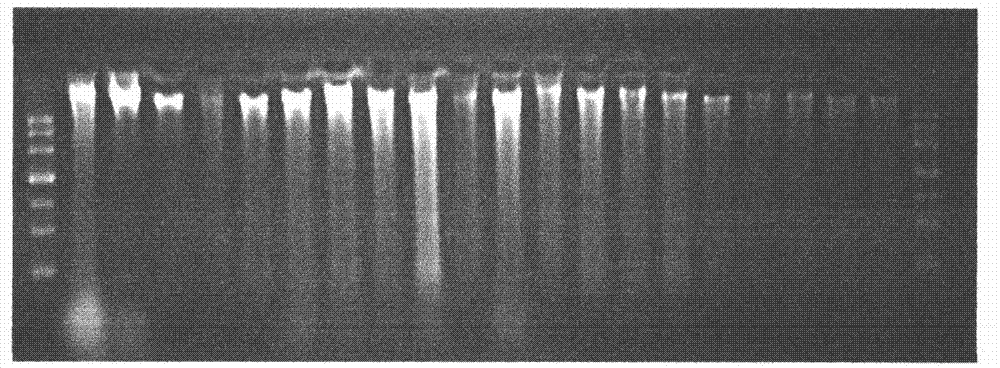DNA extraction method for polysaccharide-rich plant dried leaves
A technology of drying leaves and extraction methods, which is applied in the field of molecular biology, can solve the problems of difficult DNA extraction, achieve the effects of shortened extraction time, high purity, and simplified experimental procedures
- Summary
- Abstract
- Description
- Claims
- Application Information
AI Technical Summary
Problems solved by technology
Method used
Image
Examples
Embodiment Construction
[0035] The technical solutions of the present invention will be further described below in conjunction with the accompanying drawings and specific embodiments.
[0036] A DNA extraction method suitable for dry leaves of polysaccharide plants, comprising the following steps:
[0037] 1) Take 0.5-1.0g each of Chinese cherry, European sweet cherry (red light), wild Chinese cherry and hairy cherry leaves dried on color-changing silica gel, add 0.3g of PVP and V C Add liquid nitrogen to the mortar and quickly grind it into powder. If the grinding is not enough, increase the number of grinding times with liquid nitrogen;
[0038] 2) Quickly transfer the ground leaf powder into 2.0ml centrifuge tubes, 3 tubes for each sample, add about 0.2-0.4g to each tube with 1.5ml 65°C preheated desugar buffer (1mol / L sodium chloride; 0.1 mol / L Tris-HCl PH8.0; 0.02mol / L EDTAPH8.0; 0.4mol / L glucose;) and 10μl β-mercaptoethanol, mix well and place in a water bath at 65°C for 10min;
[0039] 3) Ce...
PUM
 Login to View More
Login to View More Abstract
Description
Claims
Application Information
 Login to View More
Login to View More - R&D
- Intellectual Property
- Life Sciences
- Materials
- Tech Scout
- Unparalleled Data Quality
- Higher Quality Content
- 60% Fewer Hallucinations
Browse by: Latest US Patents, China's latest patents, Technical Efficacy Thesaurus, Application Domain, Technology Topic, Popular Technical Reports.
© 2025 PatSnap. All rights reserved.Legal|Privacy policy|Modern Slavery Act Transparency Statement|Sitemap|About US| Contact US: help@patsnap.com


